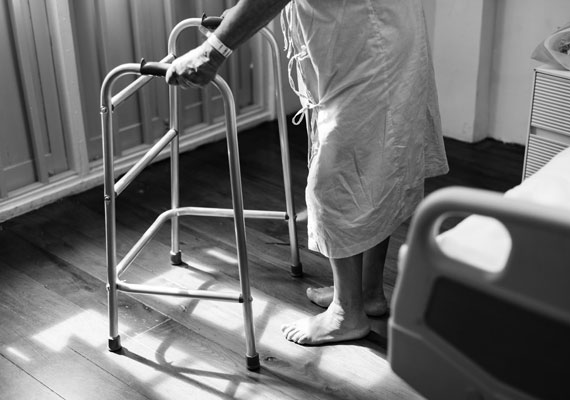Creating a Safe Culture with the AvaSure TeleSitter® solution: A Nurse’s Story
No topics assigned.
February 8, 2018
AvaSys® is a remote patient observation and communication platform that enables continuous visual and audio monitoring of patients
Though AvaSys® was developed to address the intractable problem of patient falls, my 50 years of experience as a nurse suggests that this groundbreaking technology has an even broader application. The AvaSys platform addresses a fundamental paradox in patient care that heretofore has prevented us from developing a true culture of safety.
My first job was on the night shift of a 20-bed surgical ward. With the assistance of one nurse’s aide, I managed the pre- and post-operative care of 20 male patients from 11 p.m. to 7 a.m., five days a week. The beds on the ward were placed along the perimeter of the large room, and were separated only by curtains that were pulled when privacy was required. The nurses’ station was located conspicuously (and conveniently) in the center of the ward. As a young nurse, this was where I felt safest. I had a 360-degree view of the room and all 20 patients, but perhaps even more importantly, they could see me, and were equally reassured.
In those days, when the length of stay was much longer, it was not unusual for ward patients to become acquainted. They often helped each other and frequently brought critical information to my attention that I might not have known otherwise. This community of care was grounded in the shared experience of hospitalization and surgery. Benefiting from continuous observation and communication, it became a naturally occurring culture of safety. Of course, on the downside, was the necessary restriction on visitors and the absence of complete privacy.
Over the years, we have seen hospitals evolve into more hotel-like venues of care. Wards were replaced by semi-private rooms with en suite bathrooms. Most recently, there has been significant movement to single-bed rooms that accommodate the 24-hour presence of family members. While privacy and visitor flexibility issues were resolved in this new architecture, it has not been without unintended consequences, including the insecurities experienced by anxious patients and families, left unobserved in the unfamiliar environment of a hospital room. Patients admitted to activating the call light just to see if anyone would come and how soon. In addition, the cost of care increased, as more nurses were required to serve patients in this new care topography.
At the same time, advances in biotechnology permitted many more procedures to be performed in outpatient venues and also reduced the length of stay for inpatient procedures. Thus we are left, paradoxically, with patients who are sicker and more needy, in a context where continuous patient observation and communication are more compromised.
Reconciling the desire for privacy with the need for scrutiny has challenged our capacity to create a culture of safety. Though nurses are at the heart of this paradox, our work is poorly understood. Unlike physician work, which is measured and compensated in terms of visits and procedures, nurse work is calculated and compensated in terms of expert presence. There are, of course, many components of nursing practice that are procedural, but vigilance and advocacy – requiring uninterrupted observation and communication – is at its very core. Indeed, the only reason for physicians to admit patients to a hospital these days is the need for expert and continuous 24-hour vigilance, which, ironically, is the most difficult to deliver.
Like firefighters or air traffic controllers, nurses are needed not just for the rescue, but for their preparedness and for averting the need to rescue. When nurses are not able to observe and interact with their sickest or most compromised patients, our professional self-confidence is adversely affected. When an actual incident occurs, our professional self-worth is diminished. Creating a “culture of safety” must extend beyond checklists and performance goals that reward only what doesn’t occur (no pressure sores, no central line infections, no ventilator-associated pneumonias, no falls, no readmissions, etc.). Most of us became nurses to have a positive impact and add value to the lives of our patients, not only to protect them from harm but to promote their well being as well.
I view AvaSys as my new, 20-bed ward, where our patients have the benefits of 360-degree and continuous observation, but within the privacy of a single-bed environment, where friends and family are free to visit and stay as long as desired. AvaSys is an ingenious and necessary response to the irony of trying to provide affordable vigilance in a context designed for privacy. Nurses, as well as patients, are well served by this technology. They can feel confident that all of their patients are safe even when they are caring for their other patients.
On behalf of nurses everywhere, thank you, AvaSure, for your contribution to the culture of safety.
Melanie Dreher, PhD, RN, is Dean Emeritus, Rush University College of Nursing and Board Chair, Trinity Health System.
Ready to get started?
Get in touch with an AvaSure representative to learn more about AvaSure's AI-enabled virtual care solutions.
